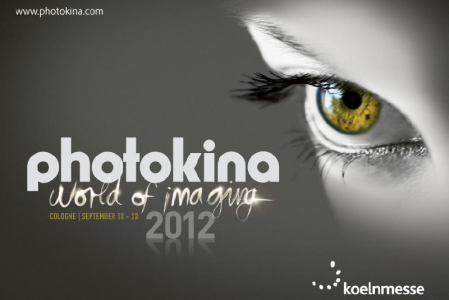Q&A with Pentax’s John Carlson and Genichiro Takaoka: Is full-frame coming, and what’s next for medium format?
posted Saturday, September 22, 2012 at 12:29 PM EDT

During the Photokina show, Dave Etchells sat down with Pentax representatives from both the American and European continents to talk about future directions for the company's cameras. Topics for discussion included the medium-format 645D digital SLR, some of the technical issues surrounding a future full-frame camera, and how the company can best get its message across to photographers.
Representing Pentax in the Americas was John Carlson, Senior Manager of Sales and Marketing at Pentax Ricoh Imaging Americas Corp. From the European branch of Pentax was Genichiro Takaoka of the Europe Team, Global Sales Support Group, System Camera Planning Team, Product Planning Group, Marketing Department, Pentax Ricoh Imaging Co., Ltd.
Dave Etchells/Imaging Resource: We’re very happy to see Ricoh decide to give Pentax an important role, and to see Ricoh making big investments in Pentax. Can you tell us anything about the potential collaborations or sharing new features and technology that you’re most excited about between the firms?
Genichiro Takaoka/Pentax Ricoh Imaging Co., Ltd.: Yes, we are just joining the Ricoh engineers from the first of April to collaborate on some of the projects. We’ve just started.
John Carlson/Pentax Ricoh Imaging Americas Corp: We really haven’t seen the impact of having the two groups together, so maybe in the CES timeframe or later.
GT: We can’t exactly say when and what kind of products are going on currently, but you will see them in the future.
JC: For us, a lot of the changes so far have been more management changes and not necessarily product changes.
DE: How is the Ricoh relationship different from the one you had with Hoya?
JC: They are definitely much more involved and want a lot more growth from the camera division. Ricoh didn’t have a consumer business side besides their digital cameras, which is relatively small in the US. So this really represents an opportunity to get into the consumer market. And they’re really--from capture to output--an imaging company, so having this consumer side of things helps the overall brand. So we really think it’s going to be a positive thing.
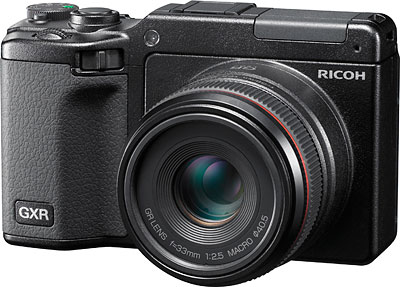
DE: This is actually more of a specific product question relating to Ricoh. The electronic viewfinder has become a really popular feature in cameras like Sony’s NEX-6 and 7 and the Olympus E-M5. Can we expect to see Ricoh GXR bodies at some point with built-in EVFs?
JC: I’m not sure about built-in. We have the accessory EVF, but I’m not sure about an actual built-in.
DE: Can we expect to see AF systems with more AF points and more or expanded cross type sensors?
GT: I have some information from our engineering team. Currently, there are 11 AF points in our products, and they’re thinking that’s not enough for the current market, so they’re looking at adding more.
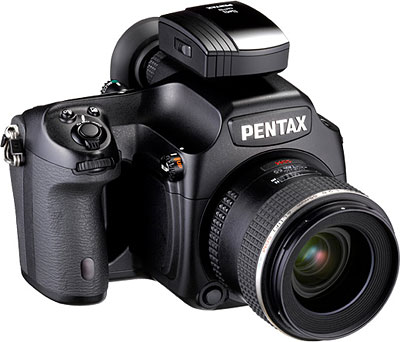
DE: Turning for the moment to medium format, another reader question, the 645D was released in December of 2010. What sort of need do you see to refresh offerings in that line up and can you talk generally about both the near term and the longer term plans for that line?
JC: Not specifics, but right now we’re focusing on expanding the lens line-up because, while you can use the older film lenses, they’re not currently available for distribution by us. So I think that’s where we need to go first is expand the line up. So now we’re up to 3 lenses--the 55mm f/2.8, the 25mm f/4, and the 90mm f/2.8. But I think that that type of camera, just by the nature of the product, the price, everything has to have a longer life cycle.
DE: That’s my next question, specifically relative to the lenses. On your site, you show a very complete lineup of 645-compatible lenses and most of them aren’t available currently. Have there been any plans to renew production on some of those FA models as a way of filling out the line? You have a lot of great lenses there.
GT: I can’t say what kind of products we’re now developing but I can clearly say we launched the 90mm macro at Photokina, and we’d like to continue to analyze the lineup to satisfy customer demands.
We are receiving many suggestions from the users, they’d like to use live view on the 645D, that kind of thing. As you mentioned already, the 645D was launched in 2010 so we need some enhancements or more developments for future models.
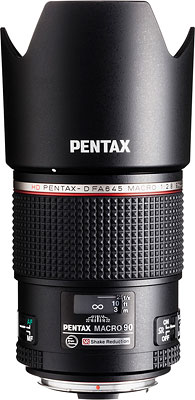
DE: Relative to your expectations, how has the 645D been doing?
JC: It did very well at the start and then it slowed down a little bit. The existing lens owners bought into the system and then the fact that we initially had only the 55mm lens available slowed things down. While it was a good start, it didn’t really speak to the professional market. So now that we’ve added the 25mm and we’ve added the 90mm, we’ve got the wide angle for the landscape, we’ve got the 90mm for the more portrait level, we have a more complete system to offer so we expect it to come back up. Plus we just recently lowered the price so that obviously should have an impact.
It’s now at $8,795 in the US. At that price you can buy the body and all three lenses for about the price you’re paying for a body from one of the other medium format manufacturers. So you can have a fairly robust system for the price of just the body from anywhere else.
DE: Can you tell us anything about future plans for flashes?
GT: We understand the necessity to launch a new product. Now with technologies like LEDs coming on to the market we are looking at what kind of technology is acceptable for the future product. We are still thinking about our next flashes.
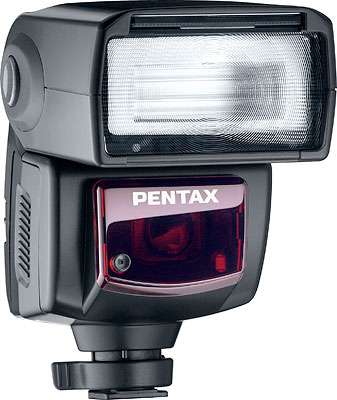
DE: That’s very interesting that you said that this is a point in time when it really makes sense to look at just what technology you should use. I hadn’t really considered that to think that it applies to flashes.
GT: It used to be that only the Xenon is available for the flashes but the technologies are different now today.
JC: We look at the power consumption and everything. It pulls up a lot of possibilities.
DE: Also in size because with the xenon, you have to have a big storage capacitor and you have to charge it up. LED could be very, very compact and very energy-efficient.
GT: Our camera bodies are relatively small compared to the competitors, so we’re looking at developing small flashes as well.
DE: Jumping to lenses, to the DA series, a reader asks, “So we’ve seen prime lenses become very popular on mirrorless cameras for their street photography appeal. Do you have any plans to produce more pancake primes like the DA limited offerings from a few years back?”
JC: The DA Limited line is--besides the telephotos--it’s pretty complete. I mean, you have the 15mm, you have the 21mm, you have the 35mm macro, the 40mm, the 70mm. So there’s a lot to it right now. The only hole there is maybe a telephoto. But then you look at our 100mm macro--while it’s not considered a limited lens, it has the build quality.
DE: At IR, we’re big fans of Pentax SLRs for their unique mix of features. You’ve got great image quality for APS-C. You have strong lenses. You have weather proofing at lower price points and a small form factor for full-featured SLRs. It looks like the K-5 II really extends those advantages. But how do you get the message out to people about your unique features? Are there particular applications or user communities that you think you could target your messaging to? And what other features do you think could help you compete with some of the bigger names?
JC: It’s a difficult question because that’s the Holy Grail – how do we get the message out to people. And we’re doing it in the US somewhat by advertising. We just started a campaign on the K30 to really talk about the weather sealing and that commonality between our K30, our WG2 and our binocular product. The K-5 II has the weather sealing. The 645 has the weather sealing. That’s a simple message we can talk to customers about, whether we get that out to social networks, through forums, through different avenues. We’re constantly looking for ways to get that story out.
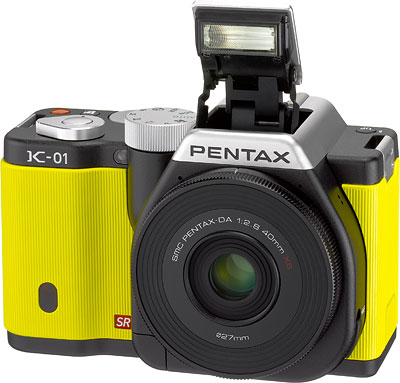
DE: With the strong APS-C size mirrorless offerings from Sony, Samsung, and Canon and your own K-01, where will SLRs continue to offer advantages. What’s the role for the SLR as we go forward?
JC: I think it has to do with shooting style. I think there’s a fairly large group of photographers who are used to shooting a certain way using a pentaprism viewfinder, taking advantage of that 100% field of view. The sort of advantage that I don’t think electronic viewfinders offer now. A lot of those folks aren’t going to use an LCD panel; but there’s definitely a customer for that as well. So I think there’ll be a place for both of them. It depends on what’s next for the mirrorless cameras.
I look at all different kinds of cameras and I’ve been a photographer for 20 years myself. I have trouble using an electronic viewfinder. It’s just not the same shooting experience and I think there are probably a lot of people who have that same feeling and like a certain style of photography versus another.
GT: We have heard the voice of some users, they say, “Please continue the DSLR range” because they try to use EVF on a competitor’s model but they don’t like it. They don’t think much of electronic viewfinders, but they are more comfortable with conventional mirror or prism viewfinders.
JC: As an analogy, some people can use an iPad, for example, as an e-reader type device. Some people will continue to use an e-ink type of device. Personally, I can’t use an iPad to read something for an extended amount of time where I can pull up my Nook and read for a couple of hours and it doesn’t bother my eyes. I think you kind of almost have that similar kind of thing with the EVF versus an optical viewfinder.
DE: Then you have the guys like me who still like books! I guess that probably equates to going back to film or something. (laughs)
A big trend of Photokina 2012 seems to be “Full-frame goes mainstream.” We’ve seen Nikon, Sony, and Canon have all announced full frame cameras at lower price points. At Pentax, you have the K-5’s low light capabilities and you already have a medium format offering. And years ago, you showed one of the first full-frame SLRs that didn’t actually make it out into the market. Where do you see the role for full-frame generally and then in particular with respect to Pentax?
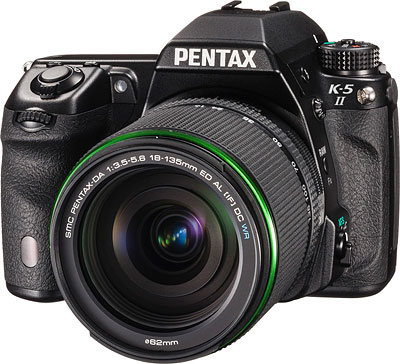
JC: It’s a very difficult question. Everybody is asking us about how Pentax is approaching full frame products. As always, we’re saying that we’re continuing to develop full frame technologies. We have also found some issues and challenges, but we continue to develop it.
We also believe the APS-C sensor has a lot of future potential. APS-C used to have noise problems, and so on. But with the evolution in technology, for example, the K-5 has an available ISO of 51,200.
So as of today, we will continue focusing on the APS-C cameras. It depends on the user demands, also the market situation. We will study continue to study the market.
JC: It’s a big commitment because while it’s not a different mount, you have to create lenses for that, because all of our current lenses, except for three Limiteds, are designed for the APS-C sensor. We have the Q mount that we’re dedicated to. We have the K mount that we’re dedicated to with the APS-C sensor, and we have the 645D. So we have a lot going on already.
GT: And also, the medium format sensor has a lot of potential. It used to be that 40 megapixels was a lot, but now Nikon’s D800 has 36 megapixels. So if we launched a future 645D product, it might need, I don’t know, 60 or even 80 megapixels.
And also we understand that full-frame has disadvantages. The body is bigger, heaver, more expensive. There are disadvantages to full-frame as well.
DE: Speaking of the lenses, this was another reader question: There are rumors that many of your APS-C lenses might actually have full frame circles but they’re not advertised as such. Can you shed some light on that?
JC: All the tests I’ve seen, if you put those lenses on a film body, you get vignetting. So they’re bigger than if it were just an APS-C without shake reduction, but that added image circle is just to accommodate the shake reduction, it doesn’t accommodate full-frame.
DE: You’re the only company offering two different mirrorless camera systems. How are the Q series and the K-01 buyers different from each other?
JC: Speaking for the US market, the K-01, it’s a great imaging device. I think a lot of people, a lot of photographers, traditional photographers, look at the design and overlook that fact because it’s a great sensor. It does great stills. It does great video. We went a non-traditional route with the design. Because of that, it was very well accepted in the design community. Mark Newson--while many traditional photographers don’t know that name, there’s a large part of the population that does recognize that name and that’s the lowest-cost Mark Newson product you can buy.
I don’t think he’s as popular in the US as he is in other parts of the world, but you know, I just saw a jacket he designed that costs as much or more than the K-01 and it’s just a jacket. It’s had an impact in that community. And videographers are starting to recognize the K-01 is a pretty capable tool for that type of work.
The Q is a different challenge because unless you see it in person and hold it, a lot of people don’t realize how small it really is. But at the same time, you have pretty much all the controls of a traditional DSLR camera, from aperture control to DNG RAW capture to video capture. It does offer a lot.
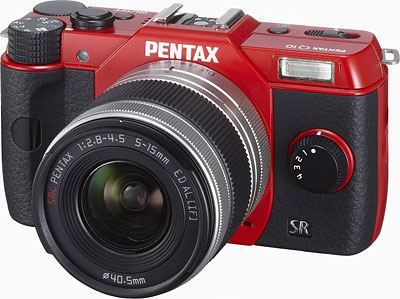
DE: So the challenge there is really making people understand just how small it is.
JC: And because of its size, it complements a DSLR. It’s what you carry when you need better quality than your smartphone’s going to offer, but you don’t want to carry a DSLR. Because smartphones are convenient. They have connectivity that’s always on. But you’re still limited to a smartphone image that won’t hold up to enlargement. We’ve printed 13 x 19 images out of the Q that just looked beautiful. You couldn’t tell them from an image with a larger camera.
DE: Is there any gender preference for the Q?
JC: Actually, we’ve seen a lot of female buyers for the Q and we see that evidence in the colors that we’re selling. We’re selling more white than we are of the black. So it definitely appeals to the female market. I don’t want to say it’s a fashion statement but to a certain degree, it is. It’s small. It’s stylish. It kind of has a retro look to it.
DE: What gives you the greatest sense of excitement about Photokina this year, whether it’s the product or a trend or something you see?
JC: For Pentax, it’s the fact that our booth is branded Pentax and Ricoh. We are one company. It’s not two companies, it’s one company. And Ricoh is truly an imaging company from capture to print. And you see some of that displayed in the booth. Obviously, with the cameras, there’s a technology display that we have of some 360-degree capture technology, a twin-lens spherical capture. And then there’s output. We have a wide format printer that offers exceptional print quality. So I think, for the people who have been with Pentax for a while, we’re very excited because Ricoh really wants to make Pentax successful, to make cameras that are some of the best out there. So I think we’re all excited about the combining of the two companies.
DE: Great. Well, a pleasure as always. Thanks very much for taking time in the middle of the busy show.
GT: Thank you very much.
JC: Thank you. Take care.
